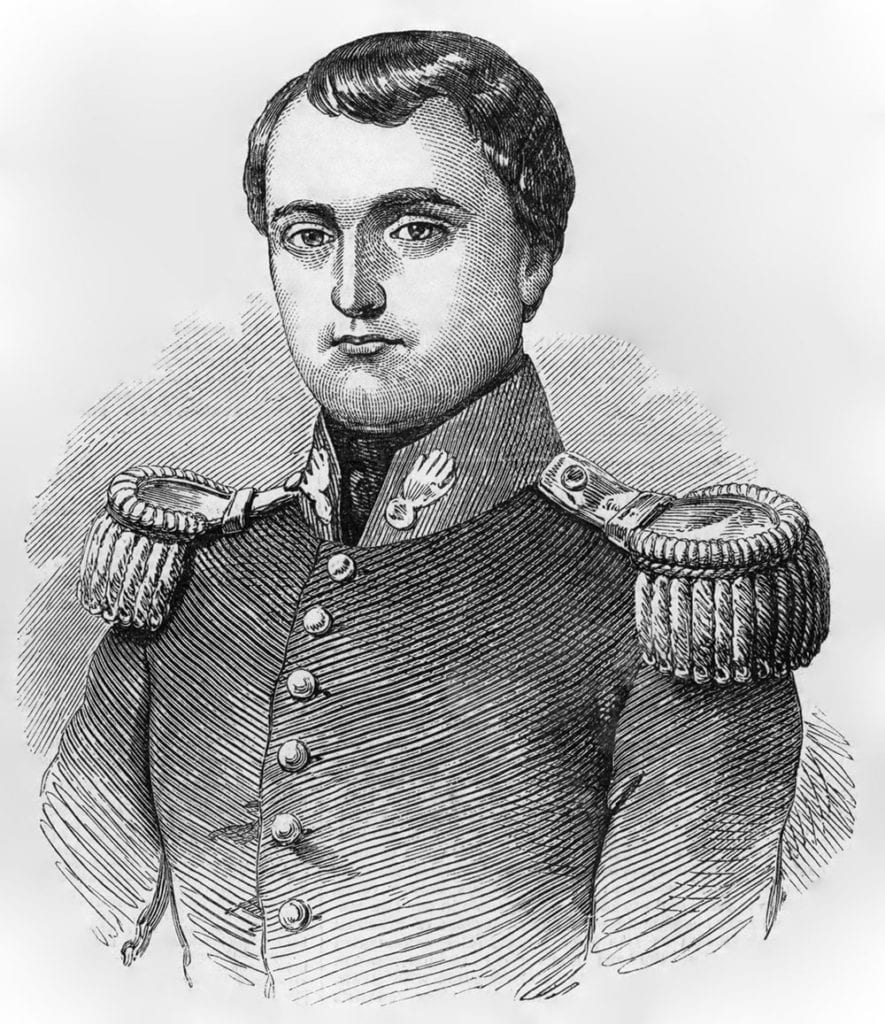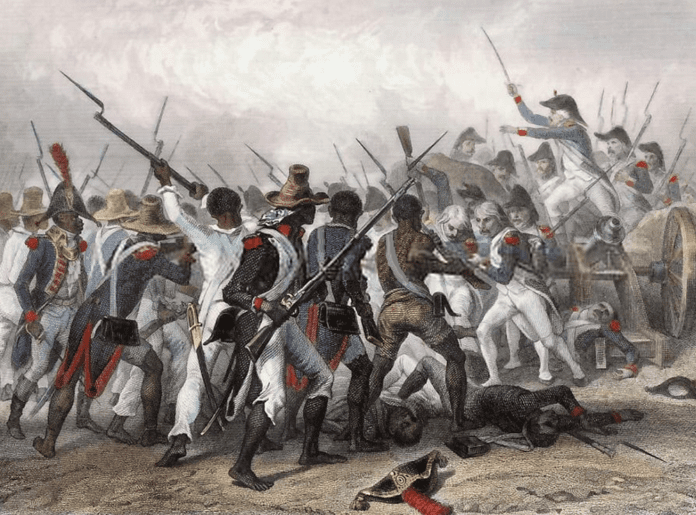Spanish, British and French colonists were the first European explorers to discover the island of Hispaniola in the Caribbean Sea. The Spanish explorers claimed the island first, which was how it got the Spanish name “Hispaniola” or “La Espanola.” However, the French colonists insisted on claiming the western portion of the island as their own. In 1697, France was officially given the western portion, which would eventually become known as Haiti.
Before the French ruled Haiti, the Spanish explorers were the dominating class of Hispaniola. They enslaved the indigenous Taino inhabitants of the island to mine for gold. The population of Taino had been in the millions, but it quickly decreased to tens of thousands over the 16th century.
The Spanish brought diseases to the island as well, which made survival even more difficult for the overworked Taino slaves. The Spanish exhausted all of the gold mines of Hispaniola. They didn’t see any reason to stick around, so they left. The French succeeded them and went on to take over the island and rule it as their own.
When the French ruled Haiti, they established sugarcane plantations that made a lot of money for France. Since the demand for sugar had increased across Europe, it created a lucrative business opportunity for sugarcane plantation owners in Haiti. African slaves were forced to work the plantations by their French masters. That was how the French colony became so rich because the plantation owners were getting all that hard labor done for free.
Many Caribbean landowners used their sugarcane plantations to exchange sugar for manufactured goods from Europe and North America. French engineers were eventually brought in to build sophisticated irrigation systems so that more sugarcane could be produced. Haiti, which was called “Saint-Domingue” at the time, was the biggest producer of sugar in the entire world, thanks to the free labor of slaves.

The Start of the Haitian Revolution
Not all the black people of African descent in Saint-Domingue were slaves, though. There were mixed-race black people who inherited wealth from their European parent. They were fortunate enough to be free from slavery, which put them in the group of the “free people of color.” However, they still didn’t have the same rights as white people, such as the right to vote.
Vincent Ogé was a mixed-race French aristocrat who insisted on having the right to vote in Saint-Domingue. After he was refused this right, Ogé gathered an army of slaves and revolted against the white colonial governor who had refused him. The revolt resulted in the death of the white colonial in 1791. This action was not originally supposed to be an effort to stop slavery, but it eventually incentivized the African slaves to rebel against their white masters.
The official start of the Haitian Revolution was on August 22nd, 1791. Leading up to this day, there were rumors spreading around that white slave owners wanted Saint-Domingue to be a sovereign entity that was independent from Europe. The Africans of Saint-Domingue feared their working conditions and treatment would get worse if this were to happen because no French authority would be around to monitor the plantation owners and their treatment of the slaves.
Between this news and the attack on the white colonial, African slaves were ready to fight for their freedom. On August 22nd, 1791, thousands of slaves began to fight against their white masters by starting a national civil war. In fact, the entire island of Hispaniola was one big war zone by the end of that year. The self-freed slaves got the upper hand on their white masters by killing them and burning their plantations to the ground.
The slave rebellion started in the north and quickly descended to the south over the course of the year. The French Civil Commissioner Léger-Félicité Sonthonax commanded approximately 7,000 troops in Saint-Domingue. The French legislature finally agreed to give equal rights to every free person in the French colonies, including Saint-Domingue, on April 4th, 1792.
However, there was no deal in sight for the French to forfeit Saint-Domingue or Santo Domingo to the freed slaves. Santo Domingo was the name given to the eastern portion of Hispaniola island, which would later become the country known as the Dominican Republic. Even though the slaves were now freed, it wasn’t good enough for one self-educated black commander and former slave named Toussaint L’Ouverture. He did not want France to have any more power over the island.
As a result, Toussaint pushed forward the effort to take over control of Saint-Domingue and give freedom to all people of color. He commanded freed slaves to take over Saint-Domingue and declared himself to be the leader of the region. He even went so far as to write a constitution of laws for Saint-Domingue. The constitution guaranteed freedom and independence for all citizens of the country. It also declared Toussaint to be the ruler for life.

The French Retaliation
In France, the leadership was not too happy about the rebellion against the French colonists and settlers. Napoleon Bonaparte, who was the leader of France at the time, ordered an army of French soldiers to go to Hispaniola and restore French order and law on the island. The French specifically tried to appeal to the mulattoes for assistance.
The mulattoes, of course, were the mixed-race people who were the sons and daughters of African and European parents. Since most of the mulattoes had one French parent, it was believed the mulattoes would feel more sympathetic to the French and their desire to have French rule in Saint-Domingue. But this effort did not work out so well for the French. The entire French colony became divided into rival groups.
The battles on Hispaniola between the freed slaves and the French continued on into the new century. Toussaint successfully took over control of Santo Domingo in January 1801. He declared himself to be the ruler of the entire island. The peasants who previously worked the farms on the plantations were put back to work there again. The difference this time was that Toussaint’s military regulated the work. No one was treated like a slave.
Napoleon Bonaparte sent French Army General Charles Leclerc and many more French soldiers to the island to restore rule. Toussaint’s slave army lost many battles and he struggled to stay in power on the island. General Leclerc made a deal with Toussaint to stop the war and let his slave troops join the French Army. In exchange, Leclerc said he would let Toussaint continue to be free.
In May 1802, Toussaint agreed to the terms. Unfortunately, Leclerc went back on his side of the deal and quickly ordered his army to apprehend Toussaint and put him on a French ship back to France. The French government imprisoned Toussaint at a castle in the Jura mountains called Fort de Joux. They left him without any food and water until he died of starvation and dehydration. His death was recorded on April 7th, 1803.
Interestingly enough, Leclerc died on November 2nd, 1802 in Saint-Domingue of yellow fever. Many of his imperial forces died from yellow forever as well. This came just after they successfully stopped Toussaint and several black colonial troops from retaining control over the island. At least one thousand of them were killed after the French tied flour sacks to their necks before forcing them into the ocean from their ships.
Around this time, the remaining slave troops continued the fight against the French. A British naval blockade arrived near the end of 1802 and significantly weakened the French Army’s forces on the island. Since the Napoleonic Wars had resumed, the Royal Navy was targeting French colonies in the Caribbean. This inadvertently helped the slave army retain control of the island.
Napoleon was starting to lose interest in these colonies and territories in the Western Hemisphere. He had no desire to send any more French troops to try and combat these other forces. He was even willing to make a deal with the United States by selling the Louisiana Territory to them in April 1803. By the end of 1803, the French Army was officially defeated in Saint-Domingue.
In January 1st, 1804, a lieutenant of Toussaint’s army named Jean-Jacques Dessalines declared the independence of Saint-Domingue. He renamed this new independent region “Haiti,” which is a name from the South American Indian language known as Arawak. The European forces and local European surrogates did not want to try retaking the territory back because they were afraid the slaves would revolt again.
As for the United States, its forces were not too interested in conquering Haiti either. There were already plenty of slave states in North America at the time, so the American government didn’t really see the sense in battling the fierce and rebellious former slaves of Haiti. Some of the free states even wanted to do business with Haiti by trading with them. But the Haitians were not too keen on bringing any more outsiders into their country. All the slavery and war that took place in Haiti had scarred the local people there forever.
The Haitians went ahead and enforced the 1801 constitution in which Toussaint established prior to his capture and death. Under the provisions of the constitution, the next person in line to be leader of the country was Dessalines. He made an official declaration that Haiti was independent and free. It was the first time in history that a slave rebellion led to the independence of a country. Haiti also became the second western nation to declare independence, with the first being the United States.
There was a big difference between the United States and Haiti, though. While the United States was populated with rich and educated European immigrants, Haiti was left with poor and uneducated former slaves. And with all the years of slavery, war and destruction across the landscape, all the agricultural land had been destroyed. What’s even worse is that France demanded for the Haitians to pay gold to the former French slaveowners in order to stay a free and independent nation.
In 1825, it is estimated that the Haitians paid $21 billion worth of gold francs to France. This totally wiped out the wealth and economy of Haiti. It is a big reason why Haiti has remained the poorest country in the entire Western Hemisphere for the last 200 years. There have never been any reparations or assistance from western countries since those days.
The United States is one of the only countries to offer foreign aid to Haiti. There are several international charities to assist the Haitian people as well, especially after natural disasters strike their country. For the most part, Haiti rebranded itself as a tourism-based economy. Foreigners from around the world fly to Haiti every year to enjoy its beautiful white sandy beaches and exotic foods.

